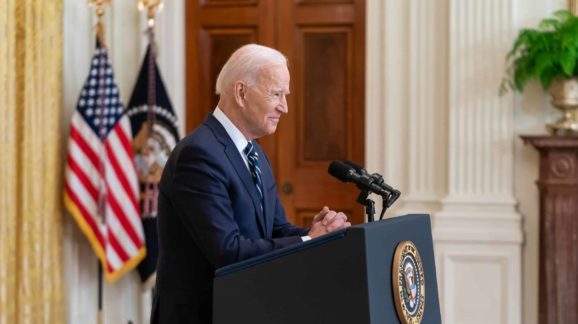Biden’s Expansion Of The Affordable Care Act Was Never About The Pandemic
Less than two months after jamming through a “temporary” expansion of the Affordable Care Act in the American Rescue Plan, President Joe Biden is asking for $200 billion to make the changes permanent. The law increased subsidies previously available for enrollees on the ACA exchanges and removed the upper income limit on subsidy eligibility for the years 2021-2022. Biden’s proposed American Families Plan continues these ACA augmentations forever — confirming that the original expansion had nothing to do with addressing a COVID-19 pandemic need and everything to do with enlarging and entrenching government’s footprint in healthcare.
No increase in government-provided insurance was necessary. Despite job losses resulting from the COVID-19 pandemic, the uninsured rate has not changed substantially. The decline in employer-provided health insurance is far less than the decline in employment. Since a large portion of the job losses were in industries with lower rates of employer coverage (retail, service, hospitality), most workers who lost jobs did not also lose insurance.
Nor can unemployment justify permanently expanding ACA subsidies now. The economy is rapidly recovering with strong employment growth and jobless claims that have steadily declined since peaking a year ago.
Now is not the time to fortify ACA exchanges that have never been popular or effective. The ACA provided substantial subsidies to people with incomes between 100%-400% of the federal poverty level, limiting their premiums to no more than a pre-set percentage of their income (2.07%-9.87%, rising with income) on premiums for a benchmark plan (the premium for the second-lowest-cost marketplace Silver plan available in the area). Subsidies ceased above the 400% federal poverty level threshold (that’s $51,520 for an individual and $106,000 for a family of four in 2020). Poor enrollees could also obtain zero-premium Bronze plans — more than a quarter of the uninsured were eligible for one — albeit with higher deductibles and co-insurance than a Silver plan.
Yet, despite these generous subsidies, most of the ACA’s coverage gains came from its Medicaid expansion. Exchange enrollment peaked in 2016 at 14.5 million and has been declining since. Few enroll unless subsidized. Only 12% of 11.4 million exchange enrollees in 2020 bought unsubsidized, on-exchange plans. About 3.3 million people preferred unsubsidized, off-exchange, individual plans. Most of the uninsured were eligible for free or nearly free insurance either through the ACA exchanges or Medicaid but did not sign up. And there was no surge of sign-ups during the 2021 open enrollment period.
March’s American Rescue Plan increased subsidies by lowering the maximum premium responsibility, saving money for people in the 100%-400% federal poverty level range who were already heavily subsidized.
The law also removed the upper income limit on subsidy eligibility, giving the greatest benefit in terms of reduced net premiums to older people with incomes over 400% federal poverty level who were previously ineligible for subsidies. The maximum percentage of income that a person or household pays on the benchmark plan remains constant regardless of how high the premium is. Since premiums rise with age — premiums for a 64-year-old can be three times the premium for a 21-year-old — older people at any given income level get a greater benefit from the subsidies. And with the removal of the upper income limit, the biggest subsidy increases go to wealthy, older people. A 60-year-old with a family of four and an income just over the former 400% federal poverty level threshold will go from a subsidy of zero to about $20,000 based on a national average benchmark premium. While the subsidy amount will decrease as the family’s income rises, the family will still be getting subsidies all the way up to an income of $331,000 — well beyond anyone’s definition of middle-class.
This is welfare for wealthier, older people, not help for those affected by COVID-19. And if the new subsidies disproportionately attract older people, the risk pool will become less healthy, increasing premiums for everyone — costs that will be largely borne by the federal government.
Read the full article at The Washington Examiner.
